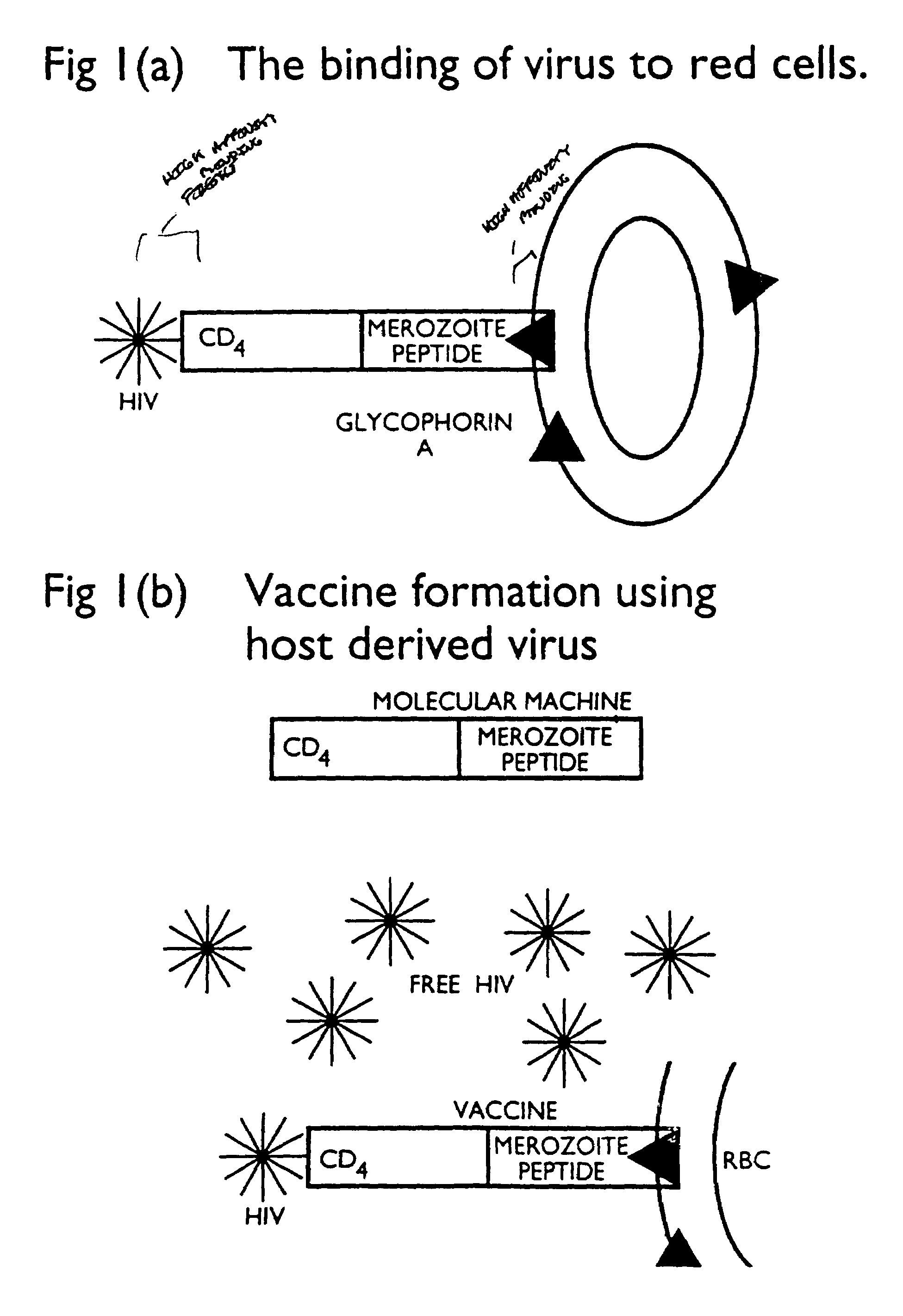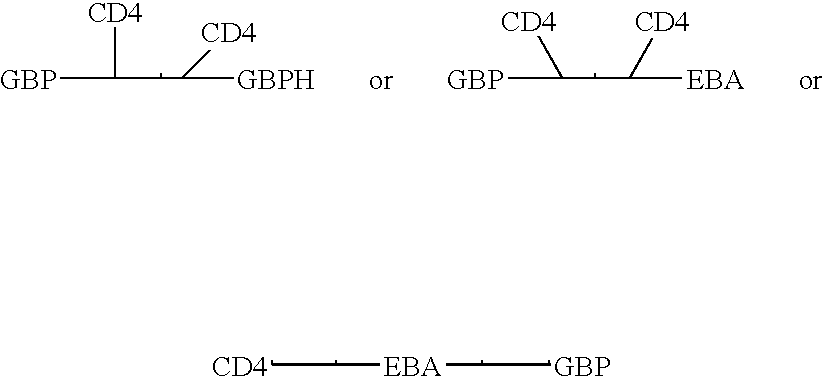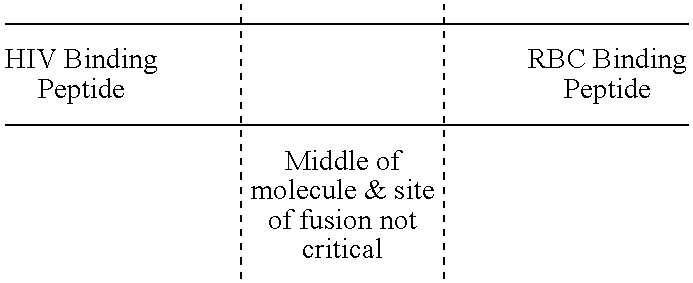Fusion proteins comprising CD4 and the malaria parasite merozoite glycophorin binding protein 130 (GBP-130)
a technology of glycophorin and fusion protein, which is applied in the field of hybrid protein molecules, can solve the problems of increasing the transmission of this virus to newborns from infected mothers, short life expectancy, and social and economic costs
- Summary
- Abstract
- Description
- Claims
- Application Information
AI Technical Summary
Benefits of technology
Problems solved by technology
Method used
Image
Examples
example 1
of Clinical Mode of Use
[0102]The molecular machines of the present disclosure in one aspect are prepared and packaged in lypholised form and stored in refridgerated conditions. The lypholised fusion peptides are reconstituted by means of injectable solvents such as injectable preparations of normal saline or dextrose 5% or the like together with buffers and other stabilising ingredients incorporated as necessary.
[0103]The reconstituted molecular machines (fusion peptides) are administered to patients by either the Direct or indirect method.
[0104]Direct method involves the intravenous or even intra muscular administration of the reconstituted injectable solution of the molecular machines of amounts usually not exceeding 1,000 mg of agent per ml. The agents may be infused slowly by means of an intravenous drip or when safe to do so or if necessary by bolus injection.
[0105]The slower administration rates provide more even mixing of agent with red cells therefore labelling many more red...
example 2
[0110]The agents may be formulated in slow release forms allowing the gradual leaching of active peptide molecular machines over a time period. Examples of such methods are the incorporation of the agents into biodegradable polymers. Such polymers could be injected as subdermal ‘rice grains’ or form part of an intrauterine contraceptive device.
[0111]Intrauterine contraceptive devices (IUD'S) impregnated with the agents of the present disclosure would slowly leak the agents towards the cervix. Cerival erosions are known to be an area of major importance in women's vulnerability to AIDS. Indeed the heavier menses associated with IUD's would leach more of the peptides from the polymer and by targetting menstrual blood or on their own provide a useful degree of protection against the virus. Such a use would be very helpful in the Third World.
[0112]For a useful reference on polymer delivery systems see Kost J and Langer R Tibech April 1992 Vol 10, 127-131 incorporated fully herein by ref...
example 3
[0113]The novel peptide agents of the present disclosure may by incorporated into creams and gels or foams for use as topical preparations. Such compositions may be used in conjunction with:
a) barrier contraceptives;
b) in place of existing lubricating agents or with lubricating agents generally
[0114]The said creams, gels or foams may also be used to dress wounds, cuts or open sores or as contraceptive agents or in conjunction with contraceptives especially barrier methods. In the case of HIV positive patients such sores would become reduced sources of infection for others.
[0115]In the case of medical personnel such creams, gels or foams and the like could render abrasions or cuts more protected against contamination by tree virus from patients. Such a mode of use as a prophylactic may be especially helpful for theatre personnel.
PUM
| Property | Measurement | Unit |
|---|---|---|
| Affinity | aaaaa | aaaaa |
Abstract
Description
Claims
Application Information
 Login to View More
Login to View More - R&D
- Intellectual Property
- Life Sciences
- Materials
- Tech Scout
- Unparalleled Data Quality
- Higher Quality Content
- 60% Fewer Hallucinations
Browse by: Latest US Patents, China's latest patents, Technical Efficacy Thesaurus, Application Domain, Technology Topic, Popular Technical Reports.
© 2025 PatSnap. All rights reserved.Legal|Privacy policy|Modern Slavery Act Transparency Statement|Sitemap|About US| Contact US: help@patsnap.com



